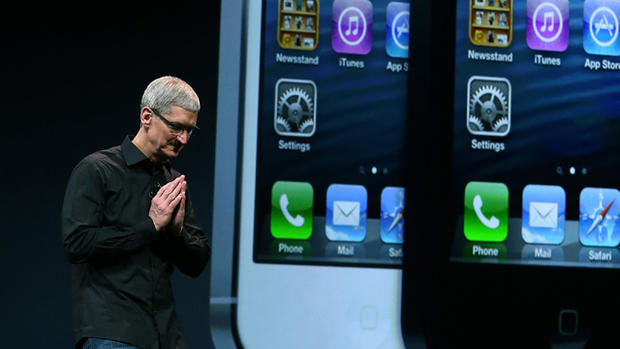Apple iPhone 5: big innovation takes a holiday
(MoneyWatch) COMMENTARY After disappointing expectations of a major new model last year, Apple (AAPL) announced the iPhone 5 today. Let there be no doubt, the device will sell a boatload of units. However, the changes seemed all incremental improvements -- new features that were nice, but none that catapulted Apple ahead and left all rival Android phones in the dust.
Pictures: Apple's new iPhone 5, iPod devices
Since the iPhone 3, Apple has worked on an alternating release schedule for the devices. One year would bring a major single number release and the next year saw an "S" incremental improvement. Last year, many people expected the iPhone 5 but Apple released the 4S.
However, the iPhone 5 seems more like another incremental release. Yes, it has LTE support, which means the device can use the faster data networks that carriers have been putting into place. But a number of competitors have had LTE models for a year or more. Other than that, consider some of the major features that Apple promoted:
- There is a glass and aluminum model as well as white and black ones.
- It's 18 percent thinner than the 4S and 20 percent lighter.
- The screen has grown longer to 4 inches with a height-to-width ratio that shows HD video. Apple's apps were adapted to make use of the increased screen space that also has been available on other phones for some time. (Apps originally designed for the smaller iPhone screen will work with black borders, like a letterbox display of a movie.)
- The touch sensor is not incorporated onto the display, not only helping make the unit thinner, but eliminating the air gap between and increased reflections. Amazon (AMZN) has already announced this feature as part of the new Kindle HD.
- Wi-Fi connections can now use the faster 802.11n technology, which other vendors have had.
- A new A6 chip speeds performance significantly, according to Apple. And other vendors had already begun to move to faster 4-core chips.
- There's longer battery life, as happens over time with all vendors.
- The camera has moved to 8 megapixels -- again, not a rarity. Other changes include a "smart filter" to improve low-light shots (possibly at the cost of lower resolution) and a new panoramic image mode -- nice touches both.
- Siri can make posts to social networks.
There are other features, as well, but the sense is small improvements with many putting Apple into the position of finally catching up with competitors. And there are also things that might ultimately become a pain in the wallet for customers. The LTE feature makes high data use easy, which could mean some big surprises when phone bills come in. And the new design requires a new connector, meaning that old plug-in equipment and cords will need adapters.
Doubtless the hardcore fans will argue that Apple is revolutionary, blazing trails and creating amazing products. But from a more detached view, the company's pace of major innovation seems to be slowing. For example, there didn't seem to be anything new that was the equivalent of a Siri or Retina display.
Perhaps much of this owes to the rapid maturation of the smartphone market. There are many vendors all trying to race ahead of each other, which raises the bar for what will be eye-catching.
The question is even with the heavy sales you can expect for the iPhone 5, has Apple shown why it focuses so much on patent suits -- because it can't keep up the same level of innovation it once did? And would the 5 have been significantly different had Steve Jobs lived?
